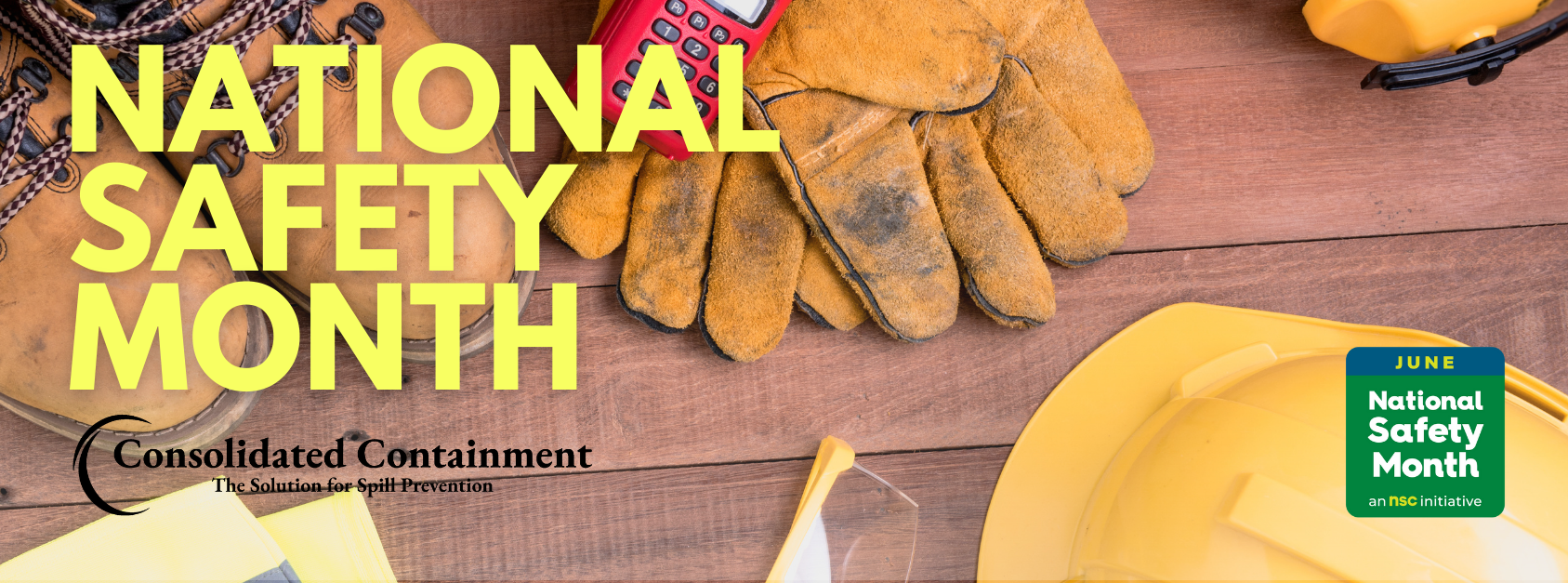
National Safety Month with OSHA
National Safety Month serves as a reminder of the importance of creating a safe working environment. One area that deserves special attention is the proper response and cleanup of hazardous spills. Spills involving explosive, flammable, poisonous, corrosive, or otherwise harmful substances are a big risk to both responders and nearby employees. This article explores hazardous spills, health hazards, risk mitigation strategies, and the role of emergency response plans.
What are hazardous materials?
Hazardous spills involve substances that can cause severe harm or injury. These may include explosive, flammable, poisonous, corrosive, oxidizing, or irritating materials. It is essential to focus on the safety and health of responders and other employees in the vicinity of the spill. To ensure protection, specialized training (usually referred to as HAZWOPER) involves what to do to avoid hazardous spills as well as what to do if a spill takes place.
Health hazards for chemical and toxic substances
The cleanup of hazardous spills exposes workers to many health hazards. Some chemical substances can cause irritation, sensitization, and carcinogenicity. Some toxic substances expose workers to risks of flammability, corrosion, and explosibility.
OSHA's Hazard Communication Standard plays a big role in how to share information about these hazards and the necessary protective measures. Proper training and keeping safety protocols are crucial to minimize the risks faced by workers.
The Emergency Response Plan
Developing and implementing an Emergency Response Plan (ERP) is vital when responding to hazardous substance spills. Employers can also use local and state emergency response plans to enhance their ERP. The Emergency Spill Response Plan (ERP) should address things like the various factors to consider for effective emergency planning. This includes defining personnel roles, establishing lines of authority, providing proper training, and maintaining clear communication.
Other key considerations include recognizing and preventing emergencies, identifying safe distances and places of refuge, ensuring site security and control, establishing evacuation routes and procedures, and knowing when to implement decontamination and emergency medical treatment.
Additionally it is essential to include in your ERP the importance of effective emergency alerting and response procedures, as well as conducting post-response critiques and follow-up measures and the significance of providing appropriate personal protective equipment (PPE) and emergency equipment.
While OSHA does not have a specific listing of spill containment equipment or devices, this is one of the more important aspects of a safety strategy for hazardous spills. Appropriate spill containment measures help prevent the spread of hazardous substances, reducing the potential harm to workers and the environment. Employers should focus on the provision of proper spill containment equipment as part of their safety strategy.
Common problems at OSHA
The most common problems OSHA runs into with spill and containment compliance are inadequate emergency response training, missing elements of an emergency response plan, and lack of the use of personal protective equipment. When companies do not follow the specifications set forth by OSHA, there can be penalties of fines up to $15,625. For repeat or willful violations, fines can get up to $156,259.
This month is a reminder of the need for specialized precautions, training, and the use of personal protective equipment to ensure the safety and health of workers and individuals in the vicinity of spills. Employers must develop and put in place comprehensive ERPs, and consider various components to address potential hazards. Additionally, the availability of spill containment equipment and devices is crucial for prompt and efficient response. As we observe National Safety Month, it is important for employers to prioritize spill response training, preparedness, and the safety of their workforce. By doing so, they contribute to a safer and healthier work environment for everyone involved.
Source: osha.gov
